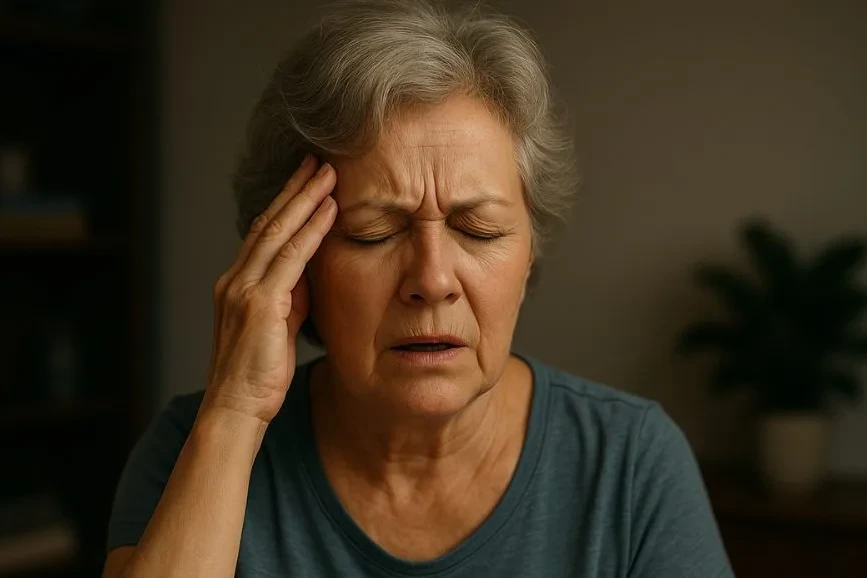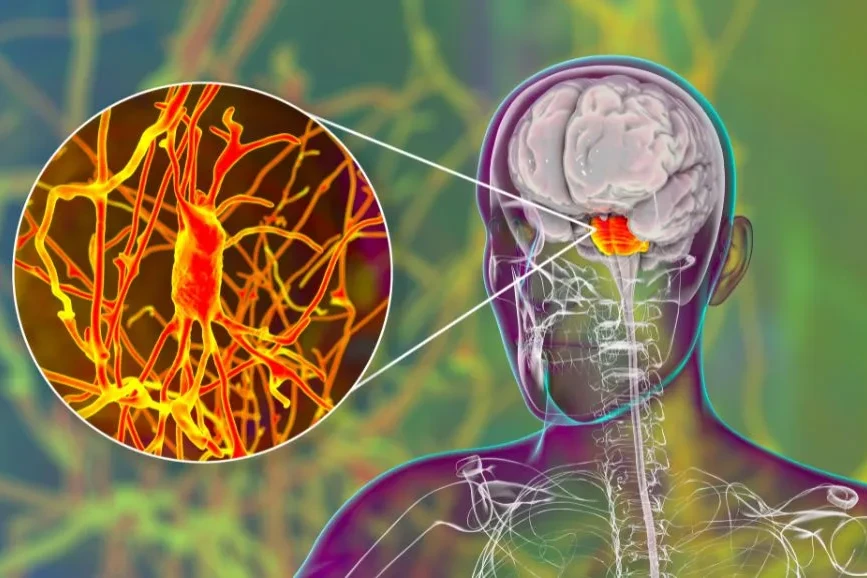Are you experiencing difficulties with coordination, balance, or muscle control? It’s essential to be aware of the potential signs of ataxia, a condition that affects adults. Ataxia is characterized by impaired coordination and movement, impacting various aspects of daily life. Recognizing the symptoms early can help in seeking appropriate medical attention and intervention.
Ataxia symptoms in adults can manifest in several ways. You may notice poor coordination, an unsteady gait, trouble with fine motor tasks, changes in speech, uncontrolled eye movements, or difficulty swallowing. These symptoms can significantly impact your ability to perform everyday activities and enjoy a good quality of life.
To better understand the signs of ataxia and how it can affect adults, let’s delve into the causes, diagnosis, treatment options, complications, and available support resources. By being informed, you can take proactive steps towards managing the condition and seeking the necessary care.
Table of Contents
ToggleCauses of Ataxia in Adults
Ataxia in adults can be caused by various factors, including acquired, degenerative, and hereditary causes. Let’s explore each of these in more detail:
Acquired Causes
Acquired causes of ataxia in adults are often related to external factors and underlying health conditions. These can include:
- Long-term alcohol use: Excessive and prolonged alcohol consumption can lead to alcohol-related ataxia.
- Certain medications: Some medications, such as anti-seizure drugs or chemotherapy agents, may have ataxia as a side effect.
- Heavy metal or solvent poisoning: Exposure to heavy metals or certain solvents, such as lead or mercury, can cause ataxia symptoms.
- Vitamin deficiencies: Deficiencies in vitamins such as vitamin E or vitamin B-12 can contribute to ataxia.
- Thyroid conditions: Abnormal thyroid function, such as hypothyroidism or hyperthyroidism, can be associated with ataxia.
- Stroke: Ataxia can occur as a result of damage to the brain caused by a stroke.
- Multiple sclerosis: This autoimmune disease can lead to ataxia due to damage to the central nervous system.
- Autoimmune diseases: Disorders like celiac disease or systemic lupus erythematosus can cause ataxia.
- Infections: Some infections, such as Epstein-Barr virus or HIV, can result in ataxia.
- Head trauma: Severe head injuries or concussions can result in ataxia symptoms.
- Cerebral palsy: This developmental disorder can cause ataxia due to impaired muscle control and coordination.
Degenerative Causes
Degenerative causes of ataxia involve progressive conditions that worsen over time. These can include:
- Multiple system atrophy: This rare neurological disorder affects the autonomic functions of the body and can lead to ataxia.
Hereditary Causes
Hereditary ataxias are caused by genetic mutations that affect the function and degeneration of nerve cells in the cerebellum. These mutations can be inherited in either an autosomal dominant or autosomal recessive pattern. Examples of hereditary ataxias include:
| Hereditary Ataxia Types | Inheritance Pattern |
|---|---|
| Friedreich’s ataxia | Autosomal recessive |
| Spinocerebellar ataxias | Autosomal dominant |
These genetic ataxias can vary in their onset age and progression rate.
Diagnosing Ataxia in Adults
To accurately diagnose ataxia in adults, a comprehensive approach is essential. The diagnostic process involves gathering a detailed medical history, including information about any family history of ataxia or related conditions. A thorough neurological examination is also conducted to assess muscle control, coordination, reflexes, and sensory functions.
In addition to the medical history and clinical evaluation, further tests and investigations may be necessary to determine the underlying cause of ataxia and exclude other conditions with similar symptoms. These additional diagnostic tests can include:
- Lab tests: Blood tests can help identify markers of specific genetic conditions or detect any metabolic abnormalities that could be contributing to ataxia.
- Genetic testing: This involves analyzing the individual’s DNA to identify any specific gene mutations or abnormalities associated with ataxia.
- Imaging studies: Magnetic Resonance Imaging (MRI) scans can provide detailed images of the brain, allowing healthcare professionals to examine for any structural abnormalities or lesions that may be causing ataxia.
Consulting with a skilled and experienced neurologist who specializes in ataxia is crucial for an accurate diagnosis. They will have the expertise to interpret test results, evaluate clinical findings, and determine the most appropriate course of action based on the individual’s unique circumstances.
Early and accurate diagnosis is essential for effective treatment and management of ataxia in adults. It allows healthcare professionals to develop personalized treatment plans and provide comprehensive care tailored to individual needs.
Differentiating Ataxia from Other Conditions
Ataxia symptoms can resemble those of other neurological disorders or conditions, making an accurate diagnosis challenging. The diagnostic process often involves ruling out alternative causes of symptoms to confirm ataxia.

| Condition | Key Features |
|---|---|
| Cerebellar Stroke | Sudden onset of symptoms, typically occurring after a stroke or related cerebrovascular event. |
| Multiple Sclerosis (MS) | Often presents with additional neurological symptoms, such as optic neuritis, muscle weakness, and sensory disturbances. |
| Parkinson’s Disease | Common symptoms include tremors, rigidity, and bradykinesia, which are not typically seen in isolated ataxia. |
| Cerebral Palsy | Generally manifests in childhood or infancy, presenting with early motor impairments like poor muscle tone and coordination difficulties. |
A proper diagnosis is crucial to ensure that individuals receive appropriate care and access to targeted treatments that can slow symptom progression and improve their quality of life.
Treatment Options for Ataxia in Adults
While there is no cure for ataxia, several treatment options are available to manage the symptoms and improve the quality of life for adults with ataxia. These treatment options aim to address the specific challenges presented by ataxia and enhance mobility, coordination, and communication abilities.
Adaptive Devices
Adaptive devices play a crucial role in assisting individuals with ataxia to maintain their independence and mobility. Walkers or canes can provide stability and support while walking, helping to improve balance and prevent falls. These devices can significantly enhance the quality of life for individuals with ataxia by allowing them to engage in daily activities with greater ease and confidence.
Therapy
Physical therapy, occupational therapy, and speech therapy are essential components of the treatment plan for ataxia in adults. Physical therapy focuses on improving coordination and balance through targeted exercises and techniques. Occupational therapy aims to enhance daily functioning and independence by addressing fine motor skills and everyday tasks. Speech therapy can help individuals with ataxia improve communication abilities, overcome speech difficulties, and maintain swallowing function.
Medications
Medications may be prescribed to manage specific symptoms associated with ataxia. For example, medications can be used to control tremors, reduce stiffness, or manage other movement-related issues. These medications are prescribed based on an individual’s specific symptoms and their overall health, taking into account potential interactions with other medications they may be taking.
Ongoing Research
Researchers are continuously studying ataxia to develop more effective treatment options. Ongoing research aims to identify novel therapeutic approaches, including potential drug therapies and gene therapies, which have shown promising results in preclinical studies. By participating in clinical trials and supporting research efforts, individuals with ataxia can contribute to advancements in treatment options and potential cures.
While treatment options for ataxia focus on managing symptoms and improving quality of life, it is important for individuals with ataxia to consult with healthcare professionals specializing in ataxia to develop an individualized treatment plan that meets their specific needs and goals.

Complications of Ataxia in Adults
Ataxia can lead to various complications that can significantly impact your daily life. It is important to be aware of these potential complications and take appropriate measures to manage them. Some of the complications associated with ataxia in adults include:
- Difficulty with daily activities
- Increased risk of falls and injuries
- Pressure sores
- Respiratory issues
- Swallowing difficulties
- Speech problems
- Dizziness
- Spasticity
- Rigidity
- Tremors
- Pain
- Fatigue
- Low blood pressure
- Bowel or bladder dysfunction
Additionally, some forms of ataxia can lead to cognitive decline, behavioral issues, and depression, further impacting your overall well-being. Managing these complications may require additional medical interventions and support. It is crucial to work closely with healthcare professionals experienced in ataxia to develop an individualized treatment plan and access appropriate support.

| Complications | Description |
|---|---|
| Difficulty with daily activities | Challenges in performing tasks such as dressing, bathing, and eating independently. |
| Increased risk of falls and injuries | Unsteady gait and coordination difficulties may result in frequent falls and injuries. |
| Pressure sores | Immobilization or prolonged sitting can cause pressure sores or ulcers. |
| Respiratory issues | Weakness in the muscles involved in breathing can lead to respiratory problems. |
| Swallowing difficulties | Weakened coordination of the muscles involved in swallowing can result in swallowing difficulties or aspiration. |
| Speech problems | Ataxia can affect the muscles involved in speech production, leading to slurred or unclear speech. |
| Dizziness | Ataxia can cause dizziness or vertigo, affecting balance and spatial orientation. |
| Spasticity | Increased muscle tone and stiffness can make movement and coordination more challenging. |
| Rigidity | Tightness or stiffness in the muscles can limit range of motion and affect mobility. |
| Tremors | Rhythmic or involuntary shaking movements can be present in some forms of ataxia. |
| Pain | Ataxia-related muscle weakness and strain can cause chronic pain or discomfort. |
| Fatigue | Experiencing excessive tiredness and lack of energy is common in individuals with ataxia. |
| Low blood pressure | Orthostatic hypotension, a drop in blood pressure upon standing, can lead to dizziness or lightheadedness. |
| Bowel or bladder dysfunction | Ataxia can affect the coordination of the muscles responsible for bowel and bladder control. |
| Cognitive decline | Some forms of ataxia can cause progressive cognitive decline, affecting memory, attention, and other cognitive functions. |
| Behavioral issues | Changes in behavior, including irritability, impulsivity, and emotional instability, can occur in individuals with ataxia. |
| Depression | Ataxia’s impact on daily life and functioning can result in feelings of sadness, hopelessness, or depression. |
Coping with Ataxia: Support and Resources
Coping with ataxia can be challenging, but know that you are not alone in this journey. There are resources available to help you and your family navigate the complexities of living with ataxia. One valuable avenue is joining support groups, where you can connect with others who share similar experiences and create a sense of community. These groups provide a safe space for sharing your thoughts, concerns, and triumphs, making you feel understood and supported.
An organization that offers invaluable support and resources for individuals affected by ataxia is the National Ataxia Foundation (NAF). NAF is dedicated to providing information, education, and advocacy for the ataxia community. By connecting with NAF, you can access various programs, events, and educational materials tailored to support your specific needs.

Joining Support Groups
Support groups can provide a lifeline for individuals coping with ataxia. These groups allow you to connect with others who understand the challenges you face daily. Whether you prefer in-person meetings or virtual gatherings, support groups provide a compassionate environment to share experiences, exchange practical advice, and find emotional support.
To find support groups near you, consider reaching out to local hospitals, clinics, or community centers specializing in neurological disorders. Organizations like NAF may also have information on support groups specific to ataxia in your area.
National Ataxia Foundation (NAF)
The National Ataxia Foundation is a vital resource for individuals and families affected by ataxia. Their mission is to support ataxia research, raise awareness, and provide educational resources to improve the lives of those living with ataxia.
Here are some of the valuable resources offered by NAF:
- Educational materials: NAF provides informational brochures, booklets, and online resources that cover various aspects of ataxia, from symptoms and treatment options to navigating daily life.
- Community events: NAF organizes conferences, seminars, and workshops where you can connect with experts, learn about the latest research developments, and engage in meaningful discussions with others in the community.
- Community support programs: NAF offers support programs tailored to specific age groups and demographics, providing a safe and inclusive space for individuals with ataxia and their families.
- Advocacy efforts: NAF actively advocates for the rights and needs of individuals with ataxia, working to raise awareness about the condition and improve access to care and support.
By leveraging the resources and support offered by NAF, you can gain knowledge, find solace in community, and navigate the challenges of living with ataxia more effectively.
Becoming an Advocate
Beyond receiving support and resources, you also have the power to make a difference by becoming an advocate for ataxia. Advocacy involves raising awareness, promoting research efforts, and contributing to fundraising initiatives aimed at finding better treatments and eventually a cure.
You can advocate for ataxia by participating in awareness campaigns, organizing local fundraising events, sharing your story to inspire others, and supporting research endeavors through donations or volunteering your time. By being an advocate, you can help drive advancements in knowledge and support the ataxia community as a whole.
Research and Clinical Trials for Ataxia
Research and clinical trials are essential in expanding our understanding of ataxia and finding new treatments. The National Ataxia Foundation (NAF) actively supports and funds research endeavors focused on discovering a cure for ataxia. By participating in clinical trials, individuals with ataxia have the opportunity to contribute to scientific advancements and potentially gain access to innovative therapies.
Clinical trials are studies that aim to investigate the effectiveness of new treatments or therapies for ataxia. Participating in a clinical trial allows individuals to play an active role in advancing medical knowledge and improving future treatment options. These trials are an integral part of the research process and provide researchers with valuable data to evaluate the safety and efficacy of new interventions.
If you or a loved one have ataxia, consider exploring the possibility of participating in a clinical trial. Your involvement can contribute to the development of breakthrough treatments and potentially improve your own condition. Additionally, clinical trials often provide participants with close monitoring and access to specialized healthcare professionals.
It’s important to understand that participating in a clinical trial is a personal decision that should be made after careful consideration. Consult with your healthcare provider and the research team conducting the trial to learn more about the potential risks, benefits, and eligibility criteria.
By actively engaging in research and clinical trials, we can make significant strides in the understanding and treatment of ataxia. Together, we can work towards a future where effective therapies are available for individuals living with this complex neurological condition.
Ataxia Symptoms in Adults: Medication Options
Medications can play a crucial role in managing the specific symptoms associated with ataxia in adults. Depending on the individual’s symptoms and needs, healthcare professionals who specialize in ataxia may prescribe various medications to alleviate the challenges faced by individuals with this condition. Some of the commonly prescribed medication options for ataxia symptoms in adults include:
- Antidepressants
- Antianxiety medications
- Medications for dizziness or vertigo
- Medications for fatigue
- Medications to address muscle cramps or spasms
- Medications for neuropathy
- Medications to reduce stiffness, spasticity, rigidity, or tremors
It is important to consult with a healthcare professional who specializes in ataxia to determine the most appropriate medication options based on individual symptoms and needs. They have the expertise to assess the symptoms, consider any existing medical conditions or medications, and make informed decisions regarding the best course of treatment. This personalized approach ensures that the medication options prescribed are tailored to address the specific challenges faced by individuals with ataxia.
Exercise and Physical Therapy for Ataxia in Adults
Staying active and engaging in regular exercise, under the guidance of a healthcare professional or physical therapist, can be beneficial for individuals with ataxia. Exercise programs tailored to address specific coordination and balance issues can help maintain muscle strength and flexibility, improve gait abnormalities, and enhance overall physical function. Physical therapy can also focus on targeted exercises and techniques to improve coordination, reduce falls, and enhance daily functioning.
When it comes to exercise for ataxia, it is important to choose activities that are safe and suitable for your level of ability. Your healthcare professional or physical therapist can provide personalized recommendations based on your specific needs and limitations. They may suggest exercises that focus on balance training, stretching, strengthening, and cardiovascular fitness.
Some examples of exercises that can be beneficial for individuals with ataxia include:
- Balance exercises: These can help improve stability and reduce the risk of falls. Examples include standing on one leg, heel-to-toe walking, and using balance boards or stability balls.
- Strength training: Targeted strength exercises can help improve muscle tone and stability. This may involve using resistance bands, weights, or bodyweight exercises such as squats, lunges, and push-ups.
- Coordination exercises: These activities focus on improving coordination and motor skills. Examples include playing catch, juggling, or engaging in activities that require precise movements.
- Aerobic exercises: Cardiovascular workouts like swimming, cycling, or using an elliptical machine can help improve stamina and overall fitness.
It is essential to start any exercise program gradually and listen to your body. If you experience any pain or discomfort, it is important to stop the activity and consult with your healthcare professional. Remember to warm up before exercising and cool down afterwards to prevent muscle strain or injury.
Benefits of Exercise and Physical Therapy for Ataxia
Engaging in regular exercise and physical therapy for ataxia can provide several benefits, including:
- Improved balance and coordination
- Increased muscle strength and flexibility
- Better control of movements
- Enhanced gait and mobility
- Reduced risk of falls and injuries
- Improved overall physical function
- Enhanced mood and mental well-being
By incorporating exercise and physical therapy into your routine, you can work towards managing the symptoms of ataxia and improving your quality of life.
An Example Exercise Program for Ataxia
To give you an idea of what an exercise program for ataxia may look like, here is a sample routine:
| Exercise | Repetitions | Sets |
|---|---|---|
| Heel-to-toe walking | 10-15 steps | 2-3 sets |
| Standing on one leg | 10-15 seconds | 2-3 sets |
| Squats | 10-15 repetitions | 2-3 sets |
| Lunges | 10-15 repetitions per leg | 2-3 sets |
| Shoulder press with resistance bands | 10-15 repetitions | 2-3 sets |
| Stationary cycling | 10-15 minutes | 2-3 sets |
Remember to consult with your healthcare professional or physical therapist before starting any new exercise program. They can provide individualized guidance and ensure that the exercises are safe and suitable for your specific situation.
Conclusion
Ataxia symptoms in adults can have a profound impact on daily life. It is crucial to recognize the signs of ataxia and seek early medical evaluation for accurate diagnosis and timely intervention. While there is currently no cure for ataxia, there are various treatment options available to help manage symptoms, improve quality of life, and support ongoing advancements in the field.
Working closely with knowledgeable healthcare professionals experienced in ataxia is essential to develop an individualized treatment plan tailored to your needs. They can provide guidance on appropriate treatment options, such as adaptive devices, physical therapy, speech therapy, and medications that can address specific symptoms.
Additionally, support resources, such as joining support groups or connecting with organizations like the National Ataxia Foundation, can provide a sense of community, valuable information, and emotional support. Engaging in research efforts and clinical trials can also contribute to advancing knowledge and finding better treatments for ataxia.
While living with ataxia can present challenges, remember that you are not alone. With the right support, treatment, and resources, you can navigate the impact of ataxia and strive for a better quality of life.
FAQ
What are the common symptoms of ataxia in adults?
The common symptoms of ataxia in adults include poor coordination, unsteady gait, balance issues, trouble with fine motor tasks, changes in speech, uncontrolled eye movements, and difficulty swallowing.
What can cause ataxia in adults?
Ataxia in adults can be caused by various factors, including long-term alcohol use, certain medications, heavy metal or solvent poisoning, vitamin deficiencies, thyroid conditions, stroke, multiple sclerosis, autoimmune diseases, infections, head trauma, and cerebral palsy.
How is ataxia diagnosed in adults?
Ataxia is diagnosed in adults through a thorough medical history, family history, and neurological examination. Additional tests, such as lab tests, genetic testing, and imaging studies like MRI, may be performed to identify the underlying cause.
What are the treatment options for ataxia in adults?
Treatment options for ataxia in adults aim to manage symptoms and improve quality of life. These may include the use of adaptive devices, physical therapy, occupational therapy, speech therapy, and medications to manage specific symptoms. Ongoing research is also being conducted to find more effective treatments.
What complications can arise from ataxia in adults?
Ataxia in adults can lead to various complications, including difficulties with daily activities, increased risk of falls and injuries, pressure sores, respiratory issues, swallowing difficulties, speech problems, dizziness, spasticity, rigidity, tremors, pain, fatigue, low blood pressure, and bowel or bladder dysfunction.
How can individuals cope with ataxia?
Individuals with ataxia can cope by joining support groups, connecting with organizations like the National Ataxia Foundation (NAF), and becoming advocates for research and fundraising efforts. These resources can provide a sense of community, information, and emotional support.
What role do research and clinical trials play in ataxia?
Research and clinical trials play a crucial role in advancing knowledge and developing new treatments for ataxia. The National Ataxia Foundation (NAF) supports and funds research initiatives, and clinical trials offer opportunities for individuals with ataxia to participate in studies investigating new therapies or treatments.
Are medications used to treat ataxia symptoms in adults?
Yes, medications can be used to manage specific symptoms associated with ataxia in adults. These may include antidepressants, antianxiety medications, medications for dizziness or vertigo, medications for fatigue, medications to address muscle cramps or spasms, medications for neuropathy, and medications to reduce stiffness, spasticity, rigidity, or tremors.
How can exercise and physical therapy help adults with ataxia?
Staying active and engaging in regular exercise, under the guidance of a healthcare professional or physical therapist, can be beneficial for adults with ataxia. Tailored exercise programs can help maintain muscle strength and flexibility, improve coordination and balance, and enhance overall physical function.
What should adults be aware of regarding ataxia symptoms?
Adults should be aware of the signs of ataxia and seek early medical evaluation for accurate diagnosis and timely intervention. While there is no cure for ataxia, various treatment options, support resources, research efforts, and medication options are available to help manage symptoms and improve quality of life.
About The Author

This article is medically reviewed by Dr. Chandril Chugh, Board-Certified Neurologist, providing expert insights and reliable health information.
Dr. Chandril Chugh is a U.S.-trained neurologist with over a decade of experience. Known for his compassionate care, he specializes in treating neurological conditions such as migraines, epilepsy, and Parkinson’s disease. Dr. Chugh is highly regarded for his patient-centered approach and dedication to providing personalized care.
→ Book a consultation to discover which remedies suit your needs best.




